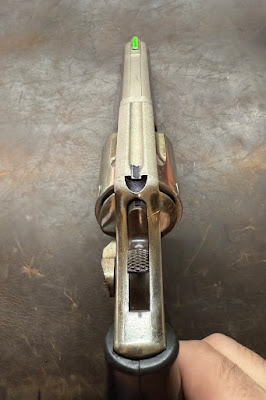Yesterday I went up to the Gunmakers Fair at Kempton and drooled over a bunch of guns I cannot currently afford. However, I did pick up a couple items that will be handy when shooting my smokepoles.
The first is a musket capper. It doesn't have any markings on it except for "ITALY" but it appears to be the same capper that Dixie Gun Works used to sell as item # NA0401. When I got my Euroarms Zouave a few years ago I wanted to get one of these but they appear to be out of production, or at least nobody is importing them into the USA.
Dixie's description on how to load the caps is incorrect. You don't remove the lid, which is riveted on. Rather there is a sliding door through which you feed the caps.
I found it at one of the vendor's tables for $20. It even had seven musket caps in it. I've removed them for storage in a test tube since the make and whether they're any good is unknown. I'll pop them on the nipple to clear it of any oil before loading, saving a few of my known-good caps.
Incidentally, you can see why musket caps are sometimes called "top hat" caps.
The capper was a bit grungy so I rubbed it down with 0000 steel wool, just enough to remove any bumpy verdigris but not the patina.
The second item is a valve to install on a powder can lid for use at the range. The spout itself is a recycled 7.62 NATO blank, mated with a brass nipple, a couple washers, and a spring loaded cap.
EDIT: I discovered that you can unscrew the top of the capper. What I thought was a rivet is actually a threaded stud. I think though that using the sliding door on the side is how you're meant to fill it.















